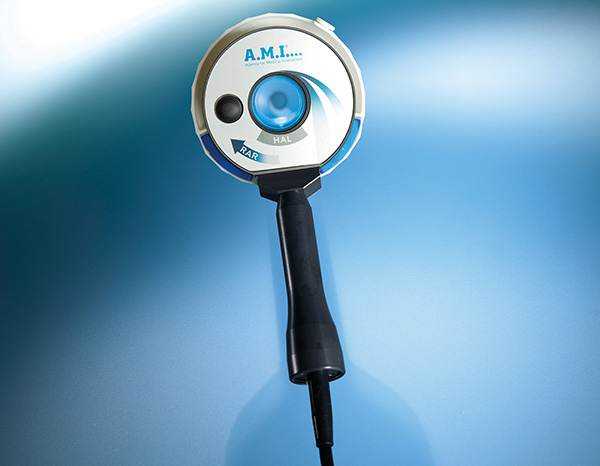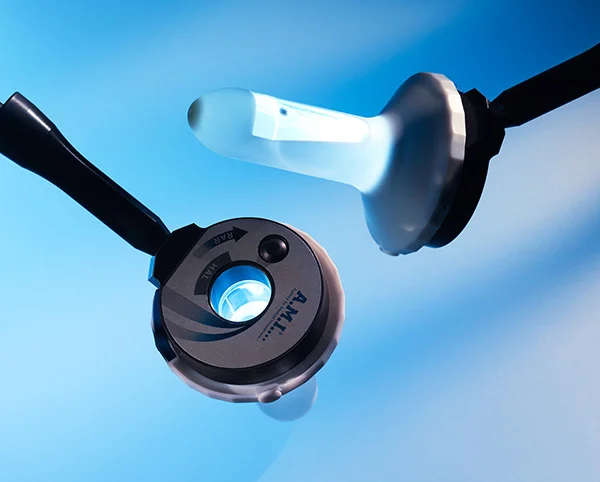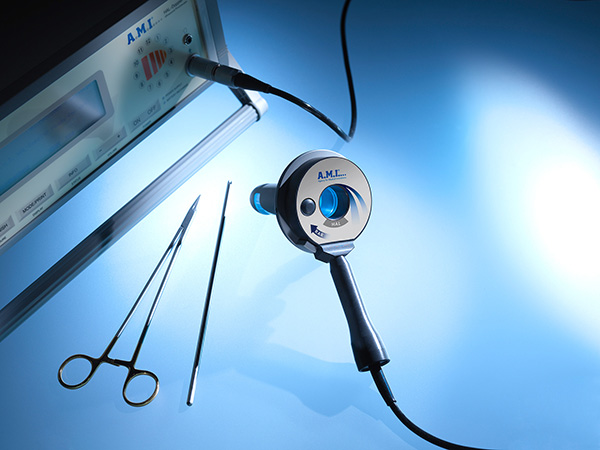HAL-RAR ii
HAL-RAR: HAL-RAR ii
Product category: Coloproctology
Details:
Treatment of the three main symptoms - bleeding, itching, and pain - with HAL
Treatment of the prolapse with RAR
Minimally-invasive
Very little pain and a quick recovery
Fewer intra-operative complications
Fewer intra- and post-operative complications
Hemorrhoid Treatment Options
HAL
RAR
Advantages of HAL-RAR
HAL-RAR
Effectively targets symptoms and prolapse and causes patients only minimal – if any – pain.
HAL-RAR – Hemorrhoidal Artery Ligation and Recto Anal Repair – is a new form of treatment for all grades of hemorrhoids.
Morbid changes in the anal region are becoming an increasingly widespread problem for the world’s population. Some 50% of people will suffer from hemorrhoidal disease at some stage in their life, however up until now, many of them have put off consulting their doctor because of the pain associated with the various treatment methods. Only now, after many years of stagnation in the development of surgical treatment for symptomatic hemorrhoids, are new alternatives being developed that are changing the status quo. Innovative new procedures, such as HAL-RAR, take away patients’ fear and ensure they visit a doctor in the early stages – in particular those doctors offering such effective and virtually pain-free treatment. So make the most of this new option for your practice or hospital!
HAL (Hemorrhoidal Artery Ligation)
The HAL method is suitable for treating low to medium-grade hemorrhoids and is extremely effective in addressing the symptoms of haemorrhoidal disease. The ligations serve to reduce the arterial blood supply, causing the haemorrhoidal cushions to shrink back to normal size. This method can be carried out with ease using the RAR Flexi Probe.
HAL Doppler
The handle with the RAR Flexi Probe is introduced into the rectum, then rotated slowly to search for arteries. The loudest Doppler signal indicates the center of the artery.
Once the first artery has been found, it is ligated using an A.M.I. Suture.
The handle is then turned again to locate further arteries. Once found, each artery is ligated as described in step 2.
As a rule, between five and eight arteries will be found during the procedure. However, this number can vary from patient to patient, and will also depend on the severity of the hemorrhoids in each case.
RAR (Recto Anal Repair)
The RAR method is used to treat the prolapsing hemorrhoids that occur during more advanced stages of the disease. RAR involves one or more mucopexies of prolapsing mucosa, carried out after the hemorrhoidal arteries have been ligated.
RAR Flexi Probe*
The handle is placed in the starting position as for ligation. The ligation window – and hence the handle – points towards the prolapse position requiring treatment.
First, an initial stitch is made as far proximal as possible. The handle is then turned slightly to reveal more mucosa distally.
Now a running suture is started, and then continued with gradual turning of the handle, leaving 7 to 10 mm between each stitch. After the last stitch, which ends proximal to the Linea Dentata, the needle is cut off and the suture material knotted up near the initial stitch. This causes the prolapsing tissue to be pulled up towards the initial stitch, where it is then secured in place with a sliding knot.
New probe technology
The RAR Flexi Probe offers surgeons several key advantages for both the HAL and RAR procedures:
New Doppler ultrasound technology: quicker, more precise detection of arteries
White sleeve: highly improved illumination
18% larger inner diameter at the ligation window: easy, quick suturing
Advantages of HAL and RAR
Since the introduction of these minimally-invasive methods, more than a hundred thousand patients have been treated with them and excellent results achieved in terms of effectiveness, patient-friendliness and safety. Furthermore, the operation can be tailored to suit each individual patient.
Effective
Successful treatment of symptoms and prolapse. In a multicentric study comprising a total of 184 patients with high-grade hemorrhoidal disease in seven countries, 89% of all patients were completely free of symptoms after 12 months. *
Patient-friendly
No open wounds – minimal pain and a quick recovery. According to published data, these factors result in a high rate of patient satisfaction.**
Safe
Very few intra- or post-operative complications. Up until now, not one major complication has been reported in the literature.











